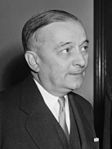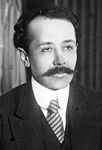French legislative election, November 1946
|
|
|||||||||||||||||||||||||||||||||||||||||||||||||||||||||||||||||||||||||||
|---|---|---|---|---|---|---|---|---|---|---|---|---|---|---|---|---|---|---|---|---|---|---|---|---|---|---|---|---|---|---|---|---|---|---|---|---|---|---|---|---|---|---|---|---|---|---|---|---|---|---|---|---|---|---|---|---|---|---|---|---|---|---|---|---|---|---|---|---|---|---|---|---|---|---|---|
|
|||||||||||||||||||||||||||||||||||||||||||||||||||||||||||||||||||||||||||
|
All 627 seats to the French National Assembly 314 seats were needed for a majority |
|||||||||||||||||||||||||||||||||||||||||||||||||||||||||||||||||||||||||||
|
|||||||||||||||||||||||||||||||||||||||||||||||||||||||||||||||||||||||||||
|
* Including independent Republicans.
|
|||||||||||||||||||||||||||||||||||||||||||||||||||||||||||||||||||||||||||
|
|||||||||||||||||||||||||||||||||||||||||||||||||||||||||||||||||||||||||||
Legislative election was held in France on 10 November 1946 to elect the first National Assembly of the Fourth Republic. The electoral system used was proportional representation.
After the rejection of a first constitutional draft (5 May 1946 referendum), a new provisional National Assembly was elected to elaborate a second text. The Christian democrat leader Georges Bidault (Popular Republican Movement, MRP) led a government which included socialists (French Section of the Workers' International, SFIO) and Communists (French Communist Party, PCF). This Three-parties alliance proposed the establishment of a parliamentary system.
Advocating a presidential government, General Charles de Gaulle campaigned for a "No" vote. He warned against the "regime of the parties" which was, according to him, responsible for the 1940 collapse. His followers founded the Gaullist Union. The Rally of the Republican Lefts (an electoral alliance dominated by the Radical Party) and the classical Right also campaigned for a "No", because they were opposed to a constitutional change and to the economic policy of the three-parties alliance. Despite this, the second constitutional draft was approved by 13 October 1946 referendum.
...
Wikipedia




